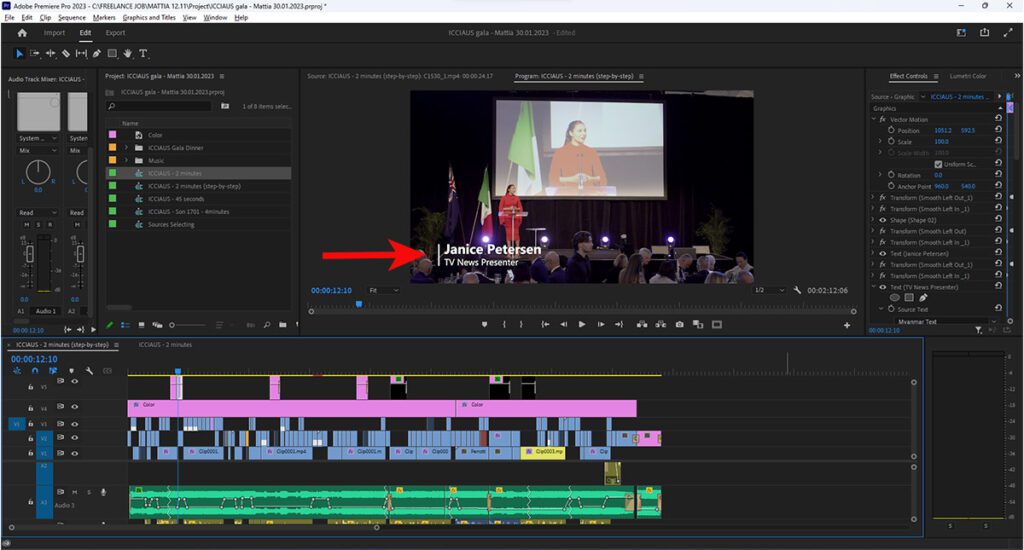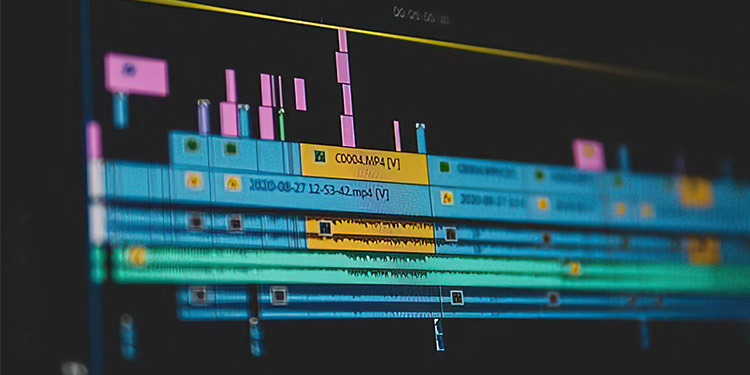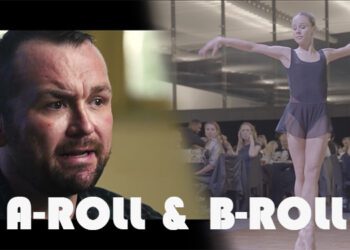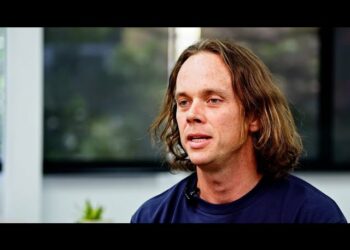In its simplest form, video editing involves combining multiple video clips into a single cohesive video with the purpose of conveying important information and evoking emotions in viewers. We’d like to introduce you to our layered approach that we follow from start to finish to create well-structured videos for our clients.
Whether it’s a filming and editing project or just editing a video, before embarking on any video production journey, we always discuss the video’s objectives with our clients. This is an opportunity for us to understand our client’s goals, target audience, and what they aim to achieve with the video.
By addressing these details upfront, we ensure that the final product aligns smoothly with our client’s marketing strategy and meets their specific requirements. This process also empowers our editor to make informed decisions regarding footage selection, video structure, mood, and sets clear expectations. Ultimately, it leads to a more successful and satisfying final product.
Layer 1: Establishing the Structure
Before delving into the video editing process, it’s essential to establish a clear structure for the video. The structure is primarily influenced by the video’s duration.
A concise one-minute video for social media requires a different structure compared to a longer 5-minute video. A one-minute video for social media needs a different structure than a longer 5-minute video because it must grab viewers’ attention quickly, deliver a concise message, and maintain engagement within a much shorter time frame.
Beyond video length, the video’s tone, mood, and overall rhythm play a crucial role in shaping its structure. For instance, if the video aims for a serious tone, our editors may select more serious footage and pair it with somber background music. On the other hand, if the video aims for a light-hearted atmosphere, we’ll incorporate playful footage and lively music to match the mood.
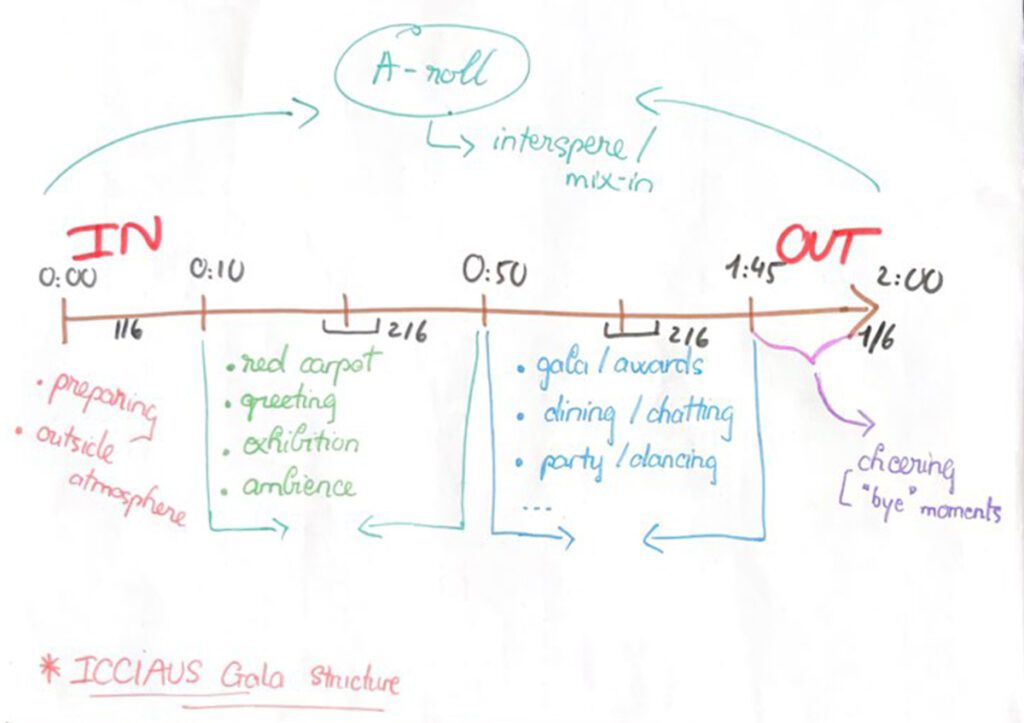
Layer 2: Music
Music plays a pivotal role in shaping the initial layer of the video, and it’s frequently one of the first elements that we incorporate into the sequence.
The choice of music is based on specific criteria such as mood and characteristics that you’ve identified for your video. For instance, if you aim for a serious tone in your video, the musical selection will differ from that of a more lighthearted tone. Similarly, if you want to match the video’s rhythm with the high energy of your brand or product, the music choice will vary from that of a slow-paced and contemplative video.
Keep in mind that when selecting music, it’s crucial to consider how moments in the first song can smoothly transition to moments in the second one (if you’re using more than two songs in a single edit).
After a thorough review of the entire footage and identification of the segments to be highlighted, we aim to synchronise the music and beats with the selected footage effectively.
We don’t simply slap a music track onto the video and wrap it up with a basic fade-out effect. It’s a meticulous process that takes time.
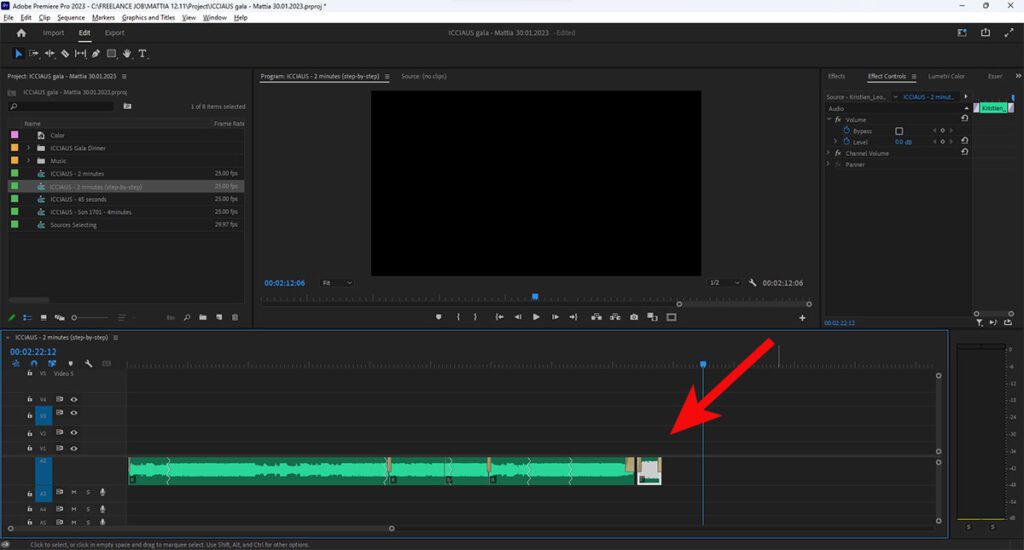
Layer 3: Pieces to camera and A-roll content
With our video structure and music already in place on the timeline, the next crucial step involves the selection of on-camera segments and the identification of key talking points, should the video necessitate them. The content of the video and the manner in which information is conveyed take center stage during this phase.
During this stage, we immerse ourselves in all the A-roll footage at our disposal. Our objective is to carefully curate the most compelling footage and determine the optimal sequence, all while adhering to the established structure, rhythm, and desired video length. This meticulous selection process ensures that our video effectively communicates its message and engages the audience.

Layer 4: B-roll
The next layer in the video editing process involves the integration of B-roll footage, a step that significantly enhances the visual storytelling and overall production quality. B-roll footage consists of supplementary shots that are used to complement and enrich the primary A-roll content. This additional layer of visuals serves various essential purposes in video creation.
First and foremost, B-roll footage provides context and depth to the narrative. It allows for the illustration of key points, adds variety to the visual experience, and can be instrumental in covering transitions, such as shifts in location or time. By juxtaposing B-roll with the A-roll, editors can create a more dynamic and engaging visual flow that captures the viewer’s attention and maintains their interest.
Moreover, B-roll can also serve as a valuable tool for concealing cuts and edits in the A-roll, creating a seamless viewing experience. Skillfully integrating B-roll can hide imperfections, enhance the overall pacing, and contribute to a polished and professional final product. In essence, the addition of B-roll is akin to adding layers of depth and complexity to a video, making it a crucial element in the art of video editing.

Layer 5: Transitions and Color Enhancement
Seamless transitions between scenes are pivotal in preserving a fluid viewing experience. Our focus is on choosing transitions that align with the video’s flow, adjusting them for pacing, and ensuring overall coherence.
Colour grading plays a pivotal role in establishing the video’s tone and mood. We fine-tune the colours to create a consistent and visually captivating aesthetic that complements the video’s style and narrative. While we may have some magical LUTs, they often fall short because your footage might be captured using different cameras or in diverse settings. We’ve experimented but there’s no automatic button that gets the job done. It’s best to undertake this process manually.
We meticulously go through each clip, adjusting colour, brightness, contrast, and saturation to ensure the video truly stands out and looks its best. Our commitment to perfection doesn’t waver until it’s just right!

Layer 6: Audio Mixing
A well-balanced audio mix is crucial for a professional video. During the sound mixing process, we carefully balance the levels of the different audio elements, such as dialogue, music, and sound effects, to ensure that they complement each other and create the desired tone and mood.
We also use various techniques such as EQ, compression, noise reduction and reverb to enhance the overall sound quality and make it more immersive.
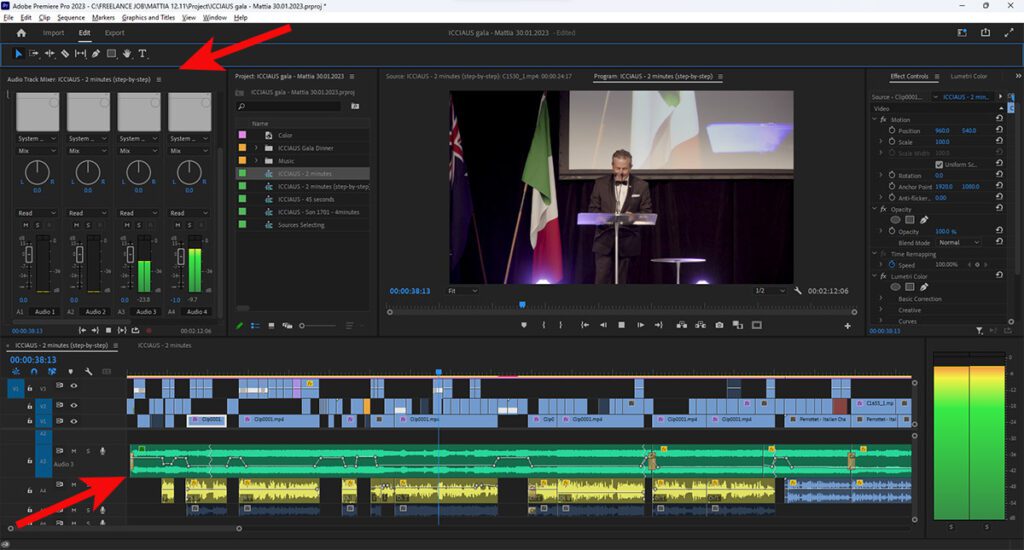
Layer 7: Graphics and Visual Enhancements
In this phase, we seamlessly incorporate extra elements such as graphics, dynamic motion effects, titles, logos, captions, and other visual elements into the video. These additions not only reinforce branding but also elevate the overall presentation, striking a harmonious balance between a polished, professional look and brand consistency.
Our aim is to ensure that the final product aligns seamlessly with your brand’s visual identity, guaranteeing that it not only looks visually appealing but also resonates with your brand’s essence.
